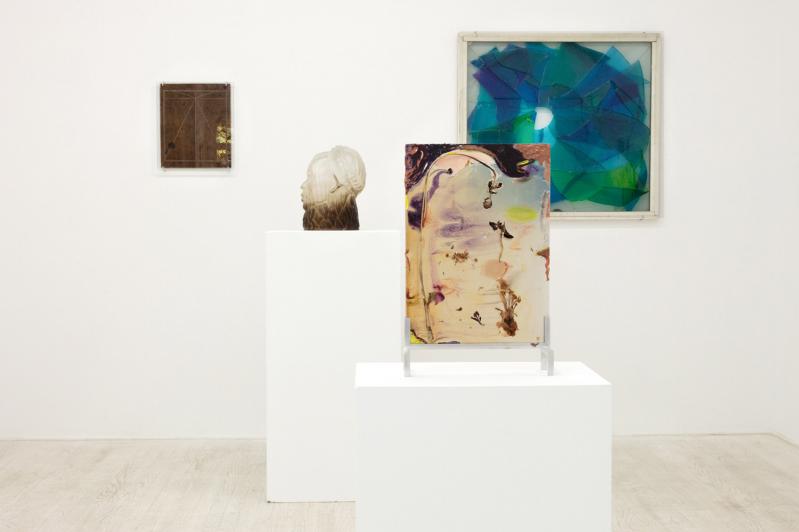Maybe because it's December and thoughts of Miami art galleries and fairs are still dancing in heads like sugarplums, but at first glance, "The Glass Show" at Halsey McKay seems like a hangover from that hectic, often slick week.
Organized by David Kennedy Cutler, an artist who has previously shown at the East Hampton gallery, the exhibition is an amalgamation of 25 artists working in glass. Mr. Cutler took over Halsey McKay for a few weeks one winter not all that long ago for an interactive and performative residency. This is his second time as curator there as well, and the exhibition is evidence that he has gained an intimate knowledge of the white space and its natural light.
Although he mentions in his statement that the show's impetus was the number of artists taking up glass recently, the show also feels site-specific when inside it. Up close and in consideration of the work, all of its potential slickness is left behind.
Here, glass can be used sculpturally, like the show-stealing "Blue Horse" by Ugo Rondinone. It can also be a medium that mimics abstract painting, like Sam Moyer's "Small Bond No. LXIII," or both, like R. Blair Sullivan's fused broken laptop screens that form a backlit three-dimensional structure.
One hanging piece, Frankie Haines's "Samyaza," has references to architecture and the visual qualities of Frank Lloyd Wright's prairie-style leaded glass. References to Tiffany-style lamps are inherent in Jonny Campolo's "Turn Offs Chandelier" series, and Jeffrey Tranchell's leaded glass and wood-paned window fills the gallery's own front window, serving as a "Calling Card," its title, and final bow as one passes it again on exiting.
Suzanne McClelland's seemingly freehand writing in her "0-9" piece is actually the result of ladling glass into numeric shapes. The assemblage is laid flat on a plinth in this installation. There are visible numerals as well as what look like dollar signs, which all kind of makes sense in an art world defined by the art market. Is this a merging of Johns and Warhol themes or merely a piece more befitting today's unapologetic materialism?
There are human busts and body parts (a bloodied index finger) rendered in polished and matte finishes. Reclaimed glass is repurposed and stained in a Lee Bontecou kind of composition by Justin Sterling. Antique glass is reassembled with hooks by Anneke Eussen.
In fact, there are a lot of found elements in these works. They include the found fencing and glass in Jongho Lee's "The Glass Shelf," which are rounded out with imperfect, but no less lovely, blown vessels, some of which seem to sway toward the light like plants.
Piece by piece, the show demonstrates the industrial material in a constant state of reinvention and communion with other materials. Tauba Auerbach's simple and slim "Spontaneous Lace" gains presence through its perpendicular placement on the wall in an aluminum armature. The rigid sheet, three-eighths of an inch in thickness, looks like it experienced some kind of colorful implosion, as the pigment inside it both asserts itself and dematerializes in the laciness referred to in its title.
Mr. Cutler makes the point that after several years of ceramics being the lingua franca of artistic materials, glass is having its moment. And what a moment -- the breadth of treatments and uses of the medium is quite astounding and well illustrated in this sampling, which remains on view through Jan. 14.
As delightful as it is to pass by the gallery on the way into the UPS store, it is even more impressive inside and in the presence of these beguiling works. Aubrey Saget is upstairs with an evocative show of oil-on-panel depictions of nature and landscapes that she brings into focus with her distinctive use of paint.




